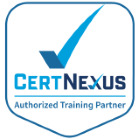
The Internet of Things (IoT) promises a wide range of benefits for industry, energy and utility companies, municipalities, healthcare, and consumers. Data can be collected in extraordinary volume and detail regarding almost anything worth measuring, such as public health and safety, the environment, industrial and agricultural production, energy, and utilities. New data analysis tools have been optimized for the massive amounts of data that IoT produces, enabling well-informed decisions to be made quickly. Before you can successfully plan and implement an IoT solution, you must understand thevarious factors that will drive your decisions. But putting IoT systems into place can be acomplicated proposition with unique considerations distinctly different from traditional ITsolutions. Business professionals often have little or no foundation for understanding of the componentsand design decisions that go into an IoT project. They may have a traditional understanding of ITsolutions which includes knowledgeof networks, cloud computing, and applications running onservers, desktop computers, and mobile devices.
Objectives:
The half day course and associated credential (IOZ-110) will validate aparticipant’s knowledge of IoT terminology, their ability to understand the components of IoT infrastructure, uncover challenges for consideration and the impact that IoT has on their organization. Successful participants will be able to identify what IoT can do for their organization and the various business and technical challenges to address